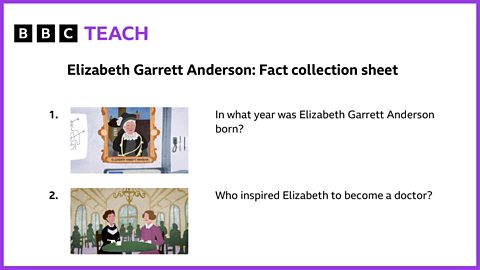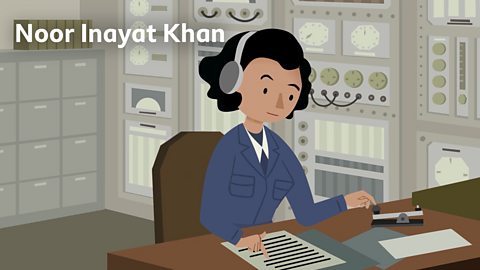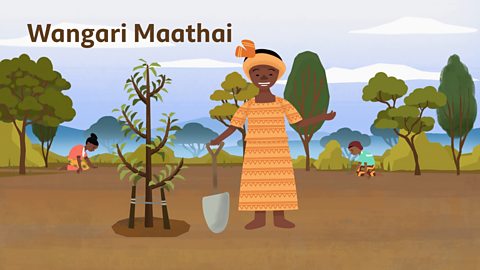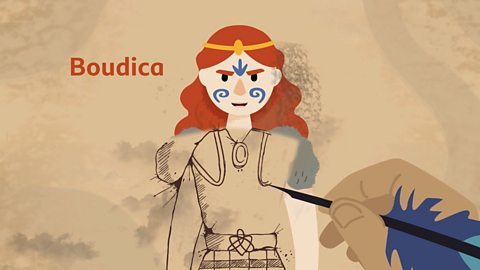Today there are thousands of women who work as doctors in the U.K. But one hundred and fifty years ago, there were no female doctors. This is the story of one of the women who fought for the right to work in medicine in England.
Her name is Elizabeth Garrett Anderson. Elizabeth was born in London in 1836. When she was five, her family moved to a small seaside town called Aldeburgh.
There, her father became a successful businessman and they built and big house, which was just as well as Elizabeth had lots of brothers and sisters!
When Elizabeth was thirteen, she went to a boarding school in Kent. Here she made friends with other young women, they were all starting to think about their futures.
At this time, women like Elizabeth were expected to get married and stay at home with their children. Elizabeth, though she knew she wanted to go out and work, she just didn't know what type of work she wanted to do. This all changed when she met Elizabeth Blackwell, the first woman to study for a medical degree in America. This inspired Elizabeth to study medicine too, but no woman had ever done this in Britain. How could she do it?
Lots of medical schools rejected Elizabeth, but eventually she found somewhere that allowed her to study. Not as a doctor, but as a nurse. After lots of hard work she passed an exam, which allowed her to practise medicine.
She still did not have a medical degree, but this did mean that Elizabeth was able to have her name listed in the medical register.
Despite this, Elizabeth still wasn't allowed to work in a hospital as a doctor, simply because she was a woman.
This didn't stop her though, she decided to set up her place where she could see patients, offer them help, and give them medicine. It was called a dispensary. All of her patients were women and children. At this time, it wasn't acceptable for a woman to look after a male patient.
After a few years, women were still not allowed to study medicine in the U.K. But Elizabeth heard that women were allowed to study medicine at a university in Paris. With the support of the French Empress, she was given permission to study for these exams in London, where she continued to work. In 1870, she travelled to Paris to sit the final exams, passing them all, even though they were in French!
Now that she had a medical degree, Elizabeth became even busier. She started to work at a big London hospital as well as expanding her own dispensary, which she renamed The New Hospital for Women. In 1872, Elizabeth was admitted to the British Medical Association. It would be twenty years until another woman was allowed to join.
As well as this, Elizabeth still found time to get married and have children of our own.
Elizabeth had broken down barriers to become a doctor, now she wanted to help other women do the same. She gave lectures to students at a new school of medicine for women, wrote a medical textbook and donated money to women's education.
Elizabeth also joined the Suffragettes and campaigned for women's right to vote, alongside her sister Millicent Fawcett, one of the leaders of the movement. Even in retirement, Elizabeth Garrett Anderson stayed busy.
When she was in her sixties, she moved back to the seaside town where she grew up and became the first, first ever female Mayor. Elizabeth Garrett Anderson once said the passion of my life is to help women, she certainly achieved this breaking down barriers for all women in medicine, who came after her.
Video summary - who was Elizabeth Garrett Anderson?
This video celebrates the life of Elizabeth Garrett Anderson, the first woman to join the British Medical Association. Elizabeth Garrett Anderson pursued medicine despite rejections from medical schools that didnât admit women at the time. She studied nursing and passed the Society of Apothecaries' exam, a loophole that allowed her to become a registered practitioner.
In 1870, Eliabeth Garrett Anderson finally earned her medical degree from the Sorbonne in Paris, establishing herself as a doctor. She opened her own dispensary, later expanding it into the New Hospital for Women and co-founding the London School of Medicine for Women. Advocating for women's education and suffrage, she also supported her sister Millicent Fawcett's suffragist movement. Her legacy endures through institutions like the Elizabeth Garrett Anderson wing at University College Hospital, a symbol of her pioneering contributions to women in medicine and society.
Teacher Notes
Before the video:
Prepare for the video by asking students to list the different environments in which women they know work. Identifying the range of careers enjoyed by women today will help students understand how attitudes to women at work have changed since the nineteenth century.
Students might also be invited to consider how the education system has changed since the nineteenth century. Discuss the different types of education available to boys and girls during the reign of Queen Victoria, and highlight that University was not an option for most women.
The class may also need help understanding how long ago Elizabeth Garrett Anderson lived. Assuming that their parents will mostly have been born in the late twentieth century and their grandparents in the mid twentieth century, their great-great grandparents will have been born at the time when Garrett Anderson was retiring from medical practice. Creating a timeline to show how many generations have passed since 1836, the year when Elizabeth was born, could help students grasp the length of time that has passed since she was alive.
After watching the video:
Students could be invited to consider the barriers that Elizabeth Garrett Anderson had to overcome in order to qualify as a doctor.
Students could be asked how they think Elizabeth Garrett Anderson felt when facing these challenges, and what skills it took for her to overcome them.
They might consider how they would feel in a similar situation, and discuss how they might choose to face similar difficulties.
This could feed into a creative writing exercise, in which they write a diary entry for Elizabeth Garrett Anderson discussing her feelings.
As a group project, students could be asked to research other pioneering women in the field of medicine and science more broadly. Figures could include Mary Seacole, Florence Nightingale, Marie Curie and Ada Lovelace.
Students could also be invited to consider what gender stereotypes remain in professions today, and what reasons there might be for this. Parallels could be drawn with other professional groups of women who are still fighting for parity today - the Lionesses might be a good example.
Links could also be made to the topic of womenâs suffrage (although this content is aimed at KS3, you may assess it as suitable for younger pupils), as Elizabeth Garrett Anderson was a member of the movement.
Key terms:
British Medical Association: The BMA is the trade union and professional body for doctors and medical students in the UK.
Medical Register: This lists all doctors registered to practise medicine in the UK.
Dispensary: A place where medicines are prepared and given out.
Apothecary: An old term for a medical professional who prepared and dispensed medicines.
Suitable for teaching History at Key Stage 2 Level in England, Wales, and Northern Ireland and the Second Level social studies in Scotland.
Use this fact collection sheet with students (PDF, 118KB)

Watch next
Noor Inayat Khan. video
This film follows Noor Inayat Khan, a radio operator and secret agent during WW2, who transmitted messages against the German occupation as part of the French resistance.

Wangari Maathai. video
This animated film explores the life and achievements of Wangari Maathai, an environmental activist from Kenya who founded the Green Belt movement.

Katherine Johnson. video
This animated film tells the story of Katherine Johnson, a mathematician who joined NASA's space program in the 1950s and played a crucial role in calculating the trajectories for their space missions.

Boudica. video
This film explores the life of Boudica, the Queen of the Iceni tribe whose rebellion against the Romans led to the destruction of Colchester.

Aneurin Bevan. video
This animated film explores the life of Aneurin Bevan, the Member of Parliament from Wales who successfully established the National Health Service (NHS) in 1948.

Robert Burns. video
This animated film explores the life of Robert Burns, a poet renowned for his celebration of his Scottish identity.
